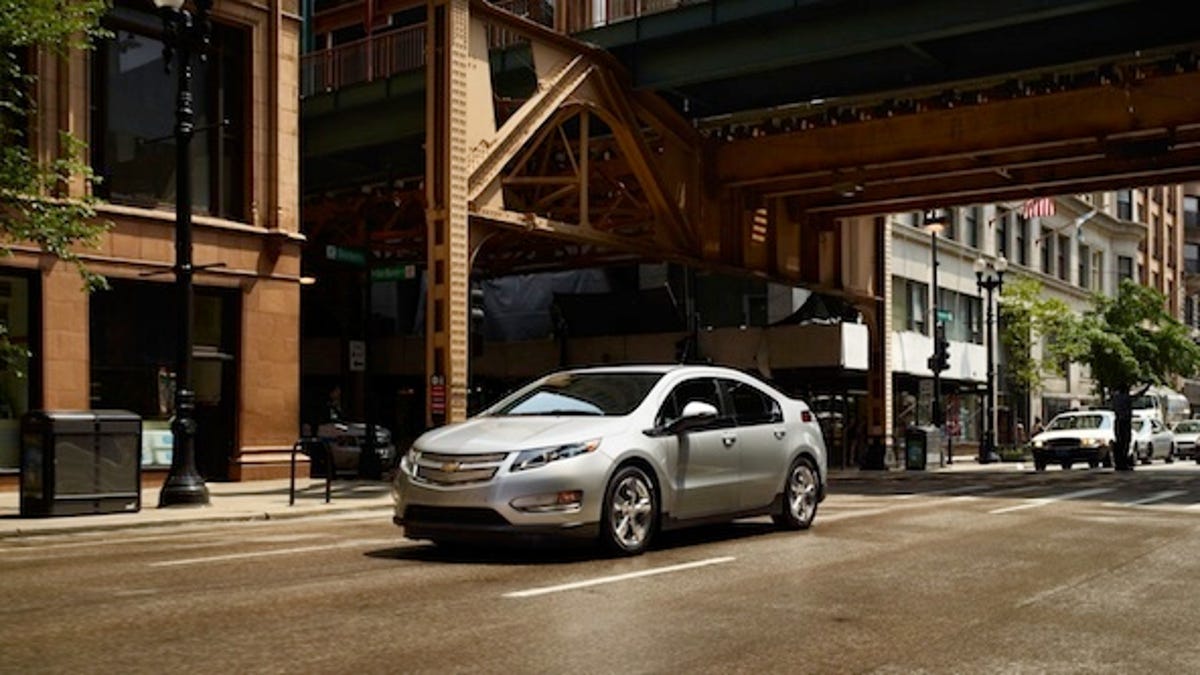The Chevy Volt: Dead or alive?
Two pieces of ostensibly conflicting news last week gave fodder to proponents and opponents of GM's pathbreaking plug-in hybrid car.

Depending on who you believe, the Volt is either alive and kickin' or in its death throes.
The most recent news about GM's plug-in hybrid gives fodder to both sides. On the upside, GM said on Wednesday that it already has sold more than 2,500 Volts this month. That would be a monthly record, bringing the global total this year to about 13,000, according to reports.
But critics quickly jumped on another piece of news: GM's suspension of Volt production for four weeks.
That shutdown is attributed to a retooling of the Detroit-Hamtramck assembly plant where the Chevy Impala will also be made.
Not surprisingly, that report immediately triggered Volt deathwatch editorials.
"Now the Volt is on hold. What went wrong?" asked a MarketWatch editorial in response to the report.
Editorials like that have been dogging GM pretty much since sales of the Volt fell below GM's target of 10,000 cars in 2011. And GM has taken an ax to its sales target for this year in the U.S. It's original goal of 45,000 has been cut to between 35,000 and 40,000. So far this year GM has sold only 10,666 Volts in the U.S.
But the completely electric Nissan Leaf has not fared well either. It has a goal of 20,000 units this year, which the Detroit News says is increasingly unlikely.
Another problem GM faces is competition. It's no longer the only plug-in hybrid on the block. Ford has its C-Max Energi plug-in hybrid ($32,950) and Toyota is now selling a Prius plug-in hybrid ($32,000).
That said, GM is right to point out a monthly sales record. I live in Los Angeles, which is already steeped in electric car history. (Remember the GM EV1?) Without reservation, I can say there are more Volts on the road this year.
It's not unusual for a Volt to pull up next to me or behind me at a traffic light. Before, I was lucky if I saw one sitting on a lot in front of a Chevy dealership.
GM says one in three Volts are now sold in California. And there are reasons for an uptick in Golden State sales. The Volt earlier this year finally qualified for the California provision that allows environmentally friendly cars to use restricted carpool lanes whether they're carrying passengers or not.
And California gas prices, which now average about $4.10, are some of the highest in the nation.
More generally, GM is also offering more reasonable lease deals. (Those deals vary across the U.S. but some two-year lease deals fall below the standard $279/month lease price.)
But the Volt's presence here still pales against the Prius hybrid: it's not unusual for a phalanx of Priuses to face me at stop lights when I happen to drive through Beverly Hills.
The problem, as I see it, is that GM needs to align its marketing with realistic expectations. The Volt may be on the tail end of what market research Gartner calls the "Trough of Disillusionment" that follows the "Peak of Inflated Expectations."
This happens with almost any product. But the Volt was particularly vulnerable, as initial expectations were high in December 2010 when sales were launched. The car was often portrayed as a crucial component in GM's turnaround strategy (it wasn't, other GM vehicles were). And the Volt became highly politicized because of it was a recipient of government largesse as part of GM's bailout package.
Moreover, a selling price of $40,000 has not helped the Volt's image.
So, the Volt, at best, will see a slow, steady rise as GM makes slow, steady improvements and offers (one would hope) better deals. And, consequently, more are seen on the road.
At worst? Well, I'll leave that to partisan speculation, which views it as a "Government Motors" boondoggle that deserves to fail.
For me, the more Volts on the road the better. My eyes are peeled.

